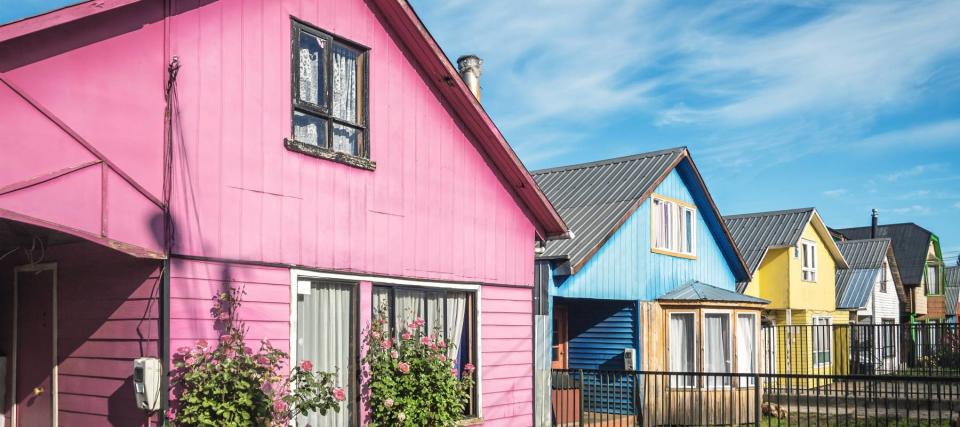Homebuyers need to put more than $127,000 — or 35% — down to comfortably afford a typical US home

As if the path to homeownership in the U.S. wasn’t already hard enough.
Since interest rates remain elevated and home values have been on the rise, putting more money down on a home can make a difference in terms of monthly housing costs.
Don't miss
Car insurance rates have spiked in the US to a stunning $2,150/year — but you can be smarter than that. Here's how you can save yourself as much as $820 annually in minutes (it's 100% free)
'You didn't want to risk it': 80-year-old woman from South Carolina is looking for the safest place for her family's $250,000 savings. Here's Dave Ramsey's response
These 5 magic money moves will boost you up America's net worth ladder in 2024 — and you can complete each step within minutes. Here's how
An analysis by Zillow of major U.S. metropolitan areas has found that a homebuyer earning the median income now needs to make a down payment of over $127,000, or about 35%, to comfortably afford a typical home. By “comfortably,” the online real estate platform means housing payments — the mortgage, property taxes, home insurance and maintenance costs — take up no more than 30% of a buyer’s income.
The average value of a home in the U.S. is around $360,000, according to Zillow. A larger down payment reduces a home’s mortgage loan amount, thereby lowering monthly payments, however, housing costs and incomes vary across the country.
In some relatively affordable markets — such as Austin, Jacksonville, Charlotte and Raleigh — a median-income earner can be comfortable putting 20% down on a typical home, per the analysis. However, in more expensive areas, such as Los Angeles, a median-income earner would need to make an 81.1% down payment ($780,203), the highest percentage in the country, to comfortably afford a typical home. In San Jose, a down payment in excess of $1.3 million (80.9%) — which is more than the typical home is worth in every other metro — would be needed.
Why the 30% goal matters
The guideline that housing costs should not exceed 30% of gross monthly income is a widely accepted standard in financial planning. This benchmark ensures that homeowners have enough income left for other essential expenses, savings and emergencies. The U.S. Department of Housing and Urban Development (HUD) defines affordable housing as a household spending no more than 30% of its income on housing costs.
Adhering to the 30% rule helps maintain a balanced budget, allowing families to live within their means and avoid excessive debt. It can also help provide a cushion for unexpected expenses, which is crucial for long-term financial health.
Some financial experts, such as Dave Ramsey’s crew, go even further, believing no more than 25% of one’s take-home pay should be spent on housing costs.
Read more: 'It's not taxed at all': Warren Buffett shares the 'best investment' you can make when battling rising costs — take advantage today
Strategies for achieving your down payment savings goal
If you’re a median-income earner in your city, saving enough for a large enough down payment on a home to ensure your housing costs are palatable may seem like a daunting task. But there are several strategies you can employ to reach this goal.
Start early and save consistently: Begin saving as early as possible and make regular contributions to a dedicated savings account. Automating savings can help ensure consistency. Even small, regular deposits can grow significantly over time due to the power of compound interest.
Take advantage of tax-advantaged accounts: Utilize tax-advantaged savings accounts such as Roth IRAs or 401(k) accounts. While these are typically used for retirement, some accounts allow for penalty-free withdrawals for first-time home purchases.
Reduce high-interest debt: Paying down high-interest debt can free up more income for savings. Prioritize paying off credit cards, personal loans and other high-interest debt to reduce monthly expenses and allocate more money toward a down payment fund.
Increase income streams: Consider side gigs, part-time jobs or freelance work to boost your income. The gig economy offers numerous opportunities for additional earnings, which can significantly accelerate your savings rate.
Cut unnecessary expenses: Review your budget and identify areas where you can cut back. This might include dining out less, canceling unused subscriptions or finding more affordable alternatives for regular expenses.
Invest wisely: Investing your savings in low-risk, high-yield accounts can help grow your funds more quickly. Consider high-yield savings accounts, certificates of deposit or low-risk investment portfolios designed for short- to medium-term goals.
Utilize employer assistance programs: Some employers offer assistance programs for homebuyers, including down payment assistance or matching contributions to a savings plan. Check with your HR department to see if such programs are available.
What to read next
Thanks to Jeff Bezos, you can now use $100 to cash in on prime real estate — without the headache of being a landlord. Here's how
Beating the market is no myth: These expert stock-pickers' recent success could help you build generational wealth
BlackRock CEO Larry Fink has an important message for the next wave of US retirees — here's how he wants to solve the country's retirement crisis
This article provides information only and should not be construed as advice. It is provided without warranty of any kind.

 Yahoo Finance
Yahoo Finance 